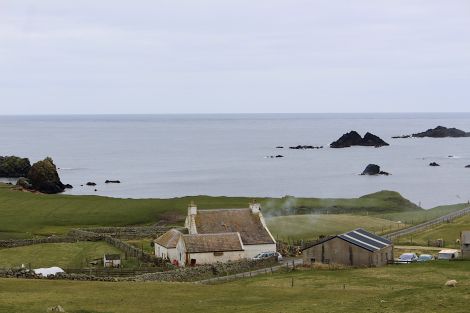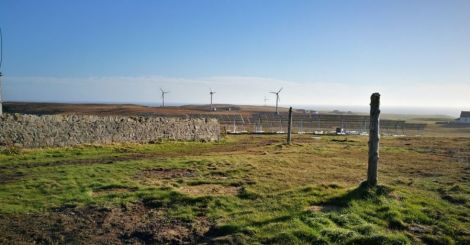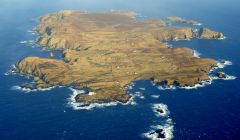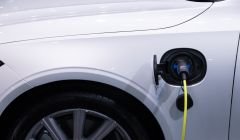Transport / Fair Isle’s limited network could pose problem for NHS roll out of electric vehicles
THE ELECTRICITY network in Fair Isle could throw something of a spanner in the works for NHS Shetland meeting its obligation to remove all fossil fuel vehicles from its fleet by 2025.
A meeting of the health board heard on Tuesday that NHS Shetland has been advised that isle’s self-contained electricity scheme would struggle to cope with an electric vehicle (EV) charger.
Finance manager Colin Marsland said the health board is trying to gain an exemption to the 2025 deadline.
That deadline is set by the Scottish Government.
Both Fair Isle and Foula have community-run electricity schemes as they are not connected to the local grid.
Fair Isle – which has a population of around 50 – revamped its power set-up in 2018 by introducing new wind turbines, solar panels and some battery storage in addition to back-up diesel generators, bringing guaranteed 24/7 power for the first time.
There is a resident NHS nurse in Fair Isle, and at Tuesday’s meeting Marsland asked who would be liable for improvements to the electricity scheme there.
Speaking this week, Robert Mitchell of the Fair Isle Electricity Company said the key issue was a worry that introducing a vehicle charger to the island could start a snowball effect of more EVs there – which the local network could not cope with.
Highlighting the constraints of the local system, he added that there was effectively a local ban on electric ovens in Fair Isle to avoid the network getting overwhelmed at pinch points.
“One electric car would probably not make that huge a difference on the island, but when you get one, you get two, you get three, you get four,” Mitchell said.
Become a member of Shetland News
“We don’t produce enough electric to cope with lots of electric cars and lots of other electricity.”
The local electricity company relied on significant funding for the £3.5 million revamp of its local network, with money coming from a range of sources including the Scottish Government, Highlands and Islands Enterprise, Shetland Islands Council and island owner National Trust for Scotland.
However, there are some ongoing issues with the system, with one turbine and a diesel currently out of action.
Mitchell added that the constraints of the system will remain unless more funding is stumped up for future improvements.
“Unless the government is going to come up with better ideas on how they’re going to produce electricity on small remote islands, or connect us to the grid somehow, by laying a cable from the mainland Shetland to Fair Isle and to Foula, then we’re limited to what we can produce,” he said.
On Wednesday he said Fair Isle was getting around 25 to 30 kW of power from the solar panels, but there was no wind.
This power has then to be shared around the island.
“If we go above that the diesel generators cut in,” Mitchell said.
“The more power demand there is, the chances are we’ll use more and more diesel generators.”
He added that the Northern Lighthouse Board has also spoken about the idea of EVs in Fair Isle, at the South Lighthouse.
Mitchell said electric vehicles are a “great idea on the mainland” but not on island with its own grid.
But he admitted owning an electric car would be a good thing – especially as fuel has to be imported into Fair Isle.
Become a member of Shetland News
Shetland News is asking its many readers to consider paying for membership to get additional features and services: -
- Remove non-local ads;
- Bookmark posts to read later;
- Exclusive curated weekly newsletter;
- Hide membership messages;
- Comments open for discussion.
If you appreciate what we do and feel strongly about impartial local journalism, then please become a member of Shetland News by either making a single payment, or setting up a monthly, quarterly or yearly subscription.


































































